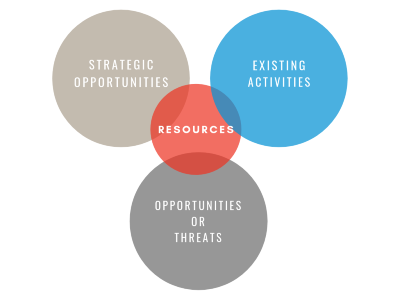
NBOA President and CEO
Earlier this month I had the pleasure of joining other independent school association leaders from across the country and around the world at the Independent School Association Network (ISAnet)’s annual meeting. ISAnet provides an opportunity for those of us in similar roles to discuss issues impacting our shared independent school membership, build relationships, collaborate and engage in a common learning experience.
One thing many of us — and many of you — have in common is the role of supporting boards as they lead the strategic direction of our schools and, in the case of ISAnet, our associations. Many in the room were not only governance leaders themselves but also provide governance education to member organizations.
Shedding new light on board governance with this particular audience might therefore seem like a daunting task, but our speaker on the topic rose to the occasion. Gabriel Eckert, FASAE, CAE, who is the CEO of the Building Owners and Managers Association of Georgia, commanded our attention as he shared his passion and practical advice for ensuring that our boards remain future-looking, strategic and mission-centric. Here are some of my favorite takeaways from the session:
Why do we include only new members in board orientation? Don’t all board members need this valuable information AND a reminder of their trustee obligations at least every three years?
Organize a bylaws scavenger hunt. Do you ever wonder if your trustees have actually read the school’s bylaws? I can think of few things more important than ensuring that our trustees are familiar with this foundational document. Eckert offered a fun, fast and efficient way to keep this “contract” between a nonprofit and the individuals they serve front and center for the board. He suggests placing different portions of your bylaws around the room and distributing a bylaws “quiz” — five questions should suffice. Encourage your trustees to find the answers by circulating the room.
Include the entire board in board orientation. Why do we include only new members in board orientation? Don’t all board members need this valuable information AND a reminder of their trustee obligations at least every three years? The answer for me, and perhaps you too, is yes. My thought is to include directors elected to their second term with new directors in the board orientation. The conversation will be that much richer with new and experienced trustees engaging in discussions about their duty of care, duty of loyalty and duty of obedience. A win-win for all.

Visualize resource management. It’s important for all boards to be generative, but how do we advance this work with the understanding that all organizations, large and small, possess finite resources? Eckert had an answer for that too. Construct a graphic with four circles in different colors. Each circle represents one of the following: strategic priorities (new initiatives), existing activities (the routine work of the organization), opportunities or threats (trends that could impact the organization and require a response) and existing resources (financial resources, staff and volunteers that support or conduct the work of the organization). List as many of these activities as you can within the corresponding circle.
The existing resources circle intersects all the other circles. Chances are it will be the smallest circle and the least likely to grow. So when trustees add a meritorious idea to any of the other categories without adding any resources, the board can easily see and visualize the pressure placed on its current resources. This offers business officers, heads of school and CEOs an opportunity to conserve their voice; the image speaks for itself. It should lead board members to the rarely asked question, “If we are going to add that, then what comes off the table?”
From the get-go, ISAnet’s meeting room was packed with vast governance knowledge and know-how, but there was still much to be learned and gained as individuals with similar roles, memberships and missions gathered to hear from each other. Thank you, ISAnet and Gabriel Eckert. And thank you as well to our dedicated boards that are tasked with imagining the future of our schools and securing the resources necessary to bring that vision to life.

Follow President and CEO Jeff Shields @shieldsNBOA.
From Net Assets NOW, September 24, 2019. Read past issues of CEO Notebook.


